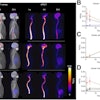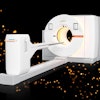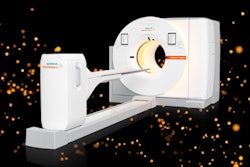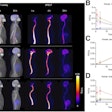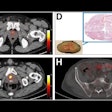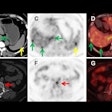A worldwide trial sponsored by the International Atomic Energy Agency (IAEA) supports the global adoption of prostate-specific antigen (PSMA) PET/CT into standard staging protocols, according to a study published November 13 in the Journal of Nuclear Medicine.
The prospective study involved 775 men with high-risk prostate cancer across 11 countries with varied income levels, with gallium-68 (Ga-68) PSMA-11 PET/CT significantly outperforming MRI for primary staging, noted lead author Juliano Cerci, MD, PhD, of Quanta Diagnostics and Therapy in Curitiba, Brazil, and colleagues.
“These findings, from a broad international cohort including low-, middle-, and high-income countries, support the global adoption of Ga-68 PSMA-11 PET/CT into standard staging protocols for high-risk [prostate cancer],” the authors wrote.
Ga-68 PSMA-PET/CT has emerged over the past decade as a highly sensitive and specific method for assessing prostate cancer burden based on its ability to detect PSMA in cancer cells. However, several aspects remain unclear, including its impact on treatment decisions, according to the group.
Moreover, few studies have assessed the approach across countries with significant variations in healthcare systems and income levels, they added.
To that end, the researchers enrolled 775 men at centers in 11 countries. High-income countries included Italy and Poland (168 patients); upper-middle income countries included Azerbaijan, Chile, Brazil, Jordan, Mexico, Malaysia, and Turkey (417 patients); and lower-middle income countries included India and Lebanon (190 patients).
All participants had high-risk or unfavorable intermediate-risk disease and were scheduled for radical prostatectomy based on conventional imaging, including bone scans and pelvic MRI. Subjects underwent Ga-68 PSMA-11 PET/CT before treatment. For the analysis, the researchers compared the PSMA-PET/CT findings with MRI findings and assessed the impact of PSMA-PET/CT on radical prostatectomy.
 A 55-year-old man presenting for initial staging of prostate cancer. (A) Ga-68 PSMA-11 PET/CT maximum-intensity projection shows PSMA-expressing lesion involving prostate (red arrow), with PSMA avidity in right seminal vesicle invasion (blue arrow). (B) PET/CT axial image shows right seminal vesicle invasion (blue arrow). (C) However, MRI at same topography shows no seminal vesicle invasion. Pathology analysis confirmed Ga-68 PSMA-11 PET/CT-positive results.Journal of Nuclear Medicine
A 55-year-old man presenting for initial staging of prostate cancer. (A) Ga-68 PSMA-11 PET/CT maximum-intensity projection shows PSMA-expressing lesion involving prostate (red arrow), with PSMA avidity in right seminal vesicle invasion (blue arrow). (B) PET/CT axial image shows right seminal vesicle invasion (blue arrow). (C) However, MRI at same topography shows no seminal vesicle invasion. Pathology analysis confirmed Ga-68 PSMA-11 PET/CT-positive results.Journal of Nuclear Medicine
In addition, there were no statistically significant differences in Ga-68 PSMA-11 PET/CT performance across different income categories among participating countries, the researchers noted.
“Nearly one in four patients who initially were considered candidates for radical prostatectomy had their treatment plans altered after PET/CT staging, preventing a noncurative surgery in those with undetected metastatic disease,” the group wrote.
Ultimately, cost and accessibility remain relevant challenges, particularly in low- and middle-income countries, and a dedicated cost-effectiveness analysis within this IAEA-supported cohort is underway, the researchers noted.
Also, a dedicated follow-up protocol for the patients is ongoing, and the team is preparing a separate survival-focused study based on this one.
“This multicenter, IAEA-supported trial confirmed that Ga-68 PSMA-11 PET/CT is superior to MRI for primary staging of high-risk [prostate cancer],” it concluded.
The full study is available here.



